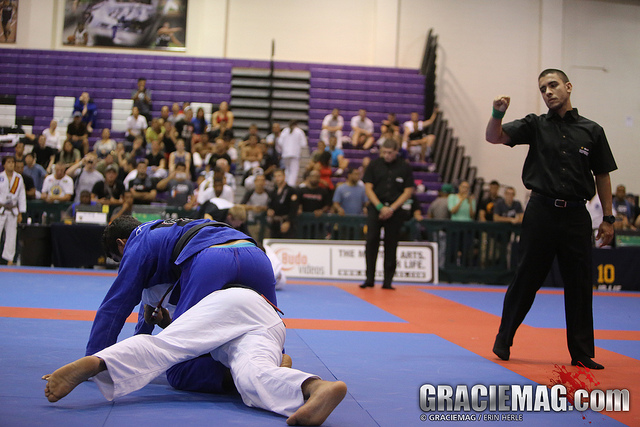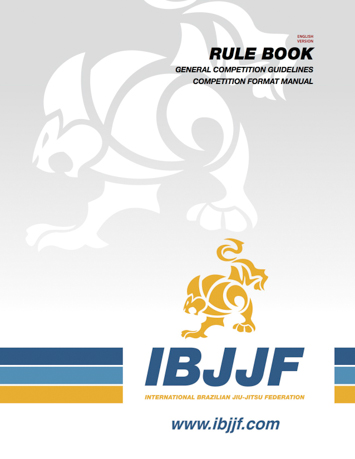
The International Brazilian Jiu-Jitsu Federation announced today, May 7, another series of updates to the sport’s rules.
They are several updates that take effect May 12.
All the updates came from several meetings the IBJJF had with the representatives of the major teams.
Among the tweaks, three have grabbed most of our attention.
In Article 6, regarding fouls, a new rule has been included concerning knee-reaping.
Now the rule states thoroughly what constitutes knee-reaping.
Knee reaping is characterized by when one of the athletes places his thigh behind the leg of his opponent and passes his calf on top of the opponent’s body above the knee, placing his foot beyond the vertical midline of the opponent’s body and applying pressure on his opponents knee from the outside, true inside, while keeping the foot of the leg at risk stuck between his hip and armpit.
It is not necessary for one of the athletes to hold the foot of his opponent in order for the foot to be considered caught or stuck.
For purposes of this rule, when one athlete is standing and bearing their weight on foot of the same leg as the knee in danger, the foot will be considered caught or stuck.
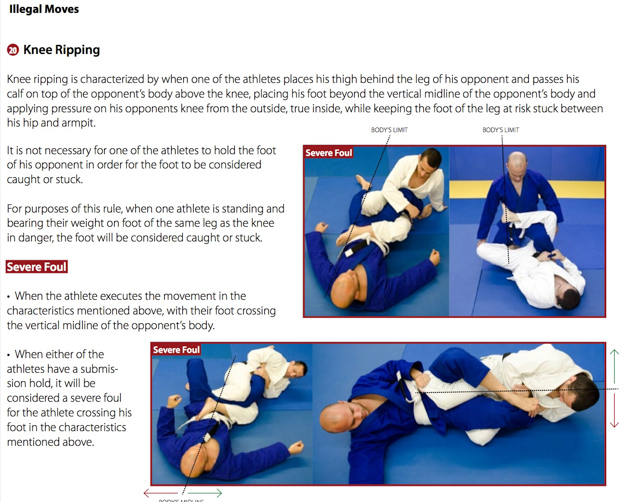
The rulebook, thus, starts differentiating the gravity of knee-reaping and the penalty that is to be applied on the infracting athlete.
Starting now, not all occurrences will result in disqualification of the athlete, as was the case hitherto.
The rule now states:
Severe Foul (Punishable with Disqualification)
• When the athlete executes the movement in the characteristics mentioned above, with their foot crossing the vertical midline of the opponent’s body.
• When either of the athletes have a submission hold, it will be considered a severe foul for the athlete crossing his foot in the characteristics mentioned above.
Serious Foul (not punishable with disqualification)
• When the athlete executes the movement in the characteristics mentioned above, moving his foot across the vertical midline of the opponent’s body. The referee shall stop the match, return the position if permitted and issue a penalty to the athletes before restarting the fight.
Another important update is the inclusion of a new scenario of lack of combativeness in item 6.5, which deals with the simultaneous pull to guard by both athletes.
The rule now states:
When both athletes pull guard at the same time, the referee will start a 20 second countdown. If at end of this 20 second countdown, even if the athletes are moving, one of the athletes does not reach the top position, does not have a submission in hold,or is not imminently completing a point scoring move, the referee will stop the fight and give a penalty to both athletes. In this situation, the referee will restart the combat in standing position.
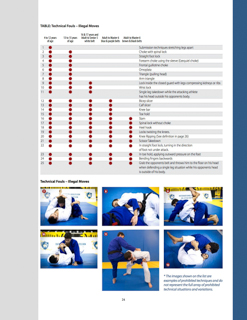 The third important update regulates the validity of the single-leg where the attacking athlete has their head positioned outside the body of the defending athlete.
The third important update regulates the validity of the single-leg where the attacking athlete has their head positioned outside the body of the defending athlete.
The rule states:
When the athlete who is defending a single leg takedown, while the athlete attacking has his head outside his opponents body, intentionally projects his attacker to the ground, by grabbing his opponents belt, to make him hit the floor with the head (picture 25).
For juveniles and younger divisions and white belts, the referee will stop the fight and restart the match with both athletes standing. No penalties will be given to either athlete.
For the other divisions the referee shall not interfere with the match.
Still regarding the single-leg with the head outside, the rule starts deeming a very serious 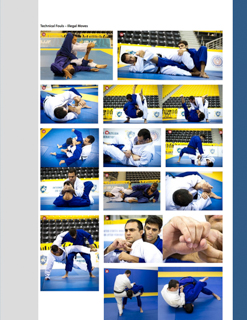 foul a certain type of defense against it.
foul a certain type of defense against it.
When the athlete who is defending a single leg takedown, while the athlete attacking has his head outside his opponents body, intentionally projects his attacker to the ground, by grabbing his opponents belt, to make him hit the floor with the head (picture 25).
The athlete who commits this infraction will be disqualified immediately.
You can see all the updates to the rules and the complete rulebook at http://ibjjf.org/rules .

